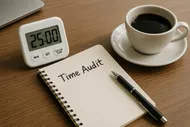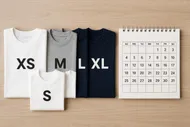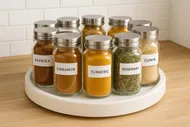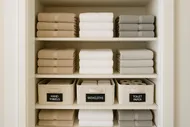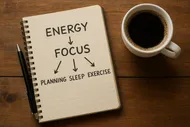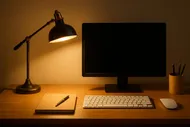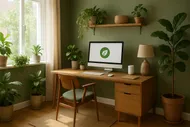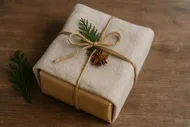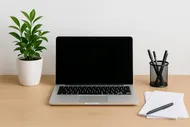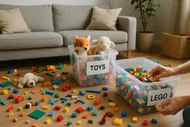So, here’s the thing: if your to‑do list looks more like a CVS receipt than a reasonable plan for one human day, I’ve been there. You start with good intentions, scribble everything you “might” do, and finish with a guilt scroll that haunts you before bedtime. That, my friend, is not productivity—it’s self‑sabotage in bullet point form.
Enter the Rule of 3: where you put your daily list on a diet and only pick three Most Important Tasks (aka MITs). It sounds almost too simple, like productivity witchcraft, but it works. Let’s dig into how (and why) this tiny shift makes your days way more manageable.

Why Our To‑Do Lists Are Out of Control
Traditional to‑do lists are like overeating at a buffet—you keep piling on tasks because in theory, you “could” do them, ignoring the fact that you only have one stomach (or one brain).
By the time you’re halfway through, you feel bloated on busywork. Studies in psychology call this the planning fallacy: we’re weirdly bad at estimating how long things will actually take. Which is why that five‑minute email turns into 45 minutes of spreadsheet rabbit‑holing.
⚠️The Harsh Truth
Your problem is not laziness. It’s that you’re tricking yourself into thinking your day has 37 workable hours. Spoiler: it doesn’t.
The Magic of Picking Three
Here’s where the Rule of 3 swoops in like a productivity fairy godparent wearing noise‑canceling headphones. At the start of your day, you choose three tasks that actually matter. Not the fluff, not the busywork—just the big rocks that move you forward.
Think of your capacity like a backpack. You can only carry so much weight before you topple over. If you overload it with 20 rocks, you’ll break your back (or your brain). But three rocks? Totally doable.
If everything is important, then nothing is important.
Patrick Lencioni
How to Choose Your Three Most Important Tasks
Alright, so how do you decide what makes the cut? Here’s my system that’s weirdly similar to choosing toppings for a pizza—pick the ones worth it, skip the pineapple if it doesn’t serve the mission:
- Impact: Will completing this actually matter tomorrow, next week, or next quarter?
- Urgency: Is someone waiting for it, or will delaying make life complicated?
- Energy Match: Does it fit your current vibe (don’t write your novel at 10 p.m. if your brain has clocked out).
If it checks two or more of these, it’s a prime candidate for the Big Three List.

The Siren Song of Busywork (and How to Resist)
You’ll be tempted to sneak in bonus items because “maybe I’ll also clean out the garage today.” Stop. That’s the productivity equivalent of eating dessert before finishing your plate—you’ll just regret it later.
To keep myself honest, I have a Parking Lot Notebook (yes, just like the one I wrote about in The Post-It Avalanche: How to Actually Use Sticky Notes for Good (Not Chaos)). This is where I jot down all the “would be nice” tasks. They’re parked, safe, but not sabotaging today’s three priorities.
📝Pro-Tip
If you finish your MITs early, then open the Parking Lot and grab a bonus task. Think of it like leveling up in a video game.
A Real Day with the Rule of 3
Here’s what my Rule of 3 looked like last Tuesday:
- Write first draft of this blog post (yes, meta).
- Review client project proposal.
- Grocery shop because apparently humans need to eat.
That’s it. Everything else—emails, Slack, folding laundry—was background noise.

By 4 p.m., all three were done. Did I still do emails and random household stuff? Yep. But the important tasks didn’t get buried under the avalanche. And I actually had energy left to watch that doc on minimalism (ironically while eating chips).
How the Rule of 3 Fits With Other Productivity Systems
If you’ve tried time blocking and felt like you were playing Tetris with meetings that wouldn’t stop falling (been there—see Calendar Cramming: Why Your Time-Blocking Keeps Exploding (And What to Do About It)), the Rule of 3 can help you tame the chaos. Just drop your three MITs into the blocks and everything else becomes optional filler.
It also pairs well with the Power Hour method. Dedicate one solid chunk of time to knocking out at least one of your three, guilt‑free.
Making the Rule of 3 a Habit
Here’s how to start without overthinking it:
- Morning ritual: Over coffee, write down your three MITs in a notebook or planning app.
- Visual cues: I sometimes use sticky notes so they’re slapping me in the face all day (not literally, but you get it).
- Celebrate small wins: When you cross them off, pause for a “ta‑da moment”—yup, just like in The Power of the Ta-Da List: Celebrating Small Wins for Big Motivation.

When Three Isn’t the Magic Number
Some days, three is too much (like when you’re sick, traveling, or just existing in low‑battery mode). That’s when I dip into something I call the Minimum Viable Day (aka, “bare minimum and survive”). On those days, my three list might shrink to one or two. And that’s okay—progress beats perfection.
The Science Behind the Simplicity
The Rule of 3 works because of something called decision fatigue. Your brain is like your phone battery: every choice drains it. When you commit early to just three things, you save brain juice for actually doing the work instead of juggling endless options.
Your 7‑Day Rule of 3 Challenge
Here’s my friendly dare: for the next seven days, cap your list at three MITs. Write them down, cross them off, and see how it feels. Odds are, you’ll do more in a week than you did with your 47‑item master plan.
And when you pull it off, come brag on our Instagram—I want to see those minimalist lists like proud parent photos.
🔥Your Turn
What are your three MITs for today? Write them down now. Don’t overthink it, don’t add a fourth. Three is the magic number.



